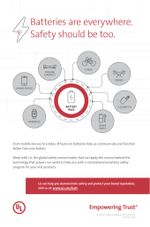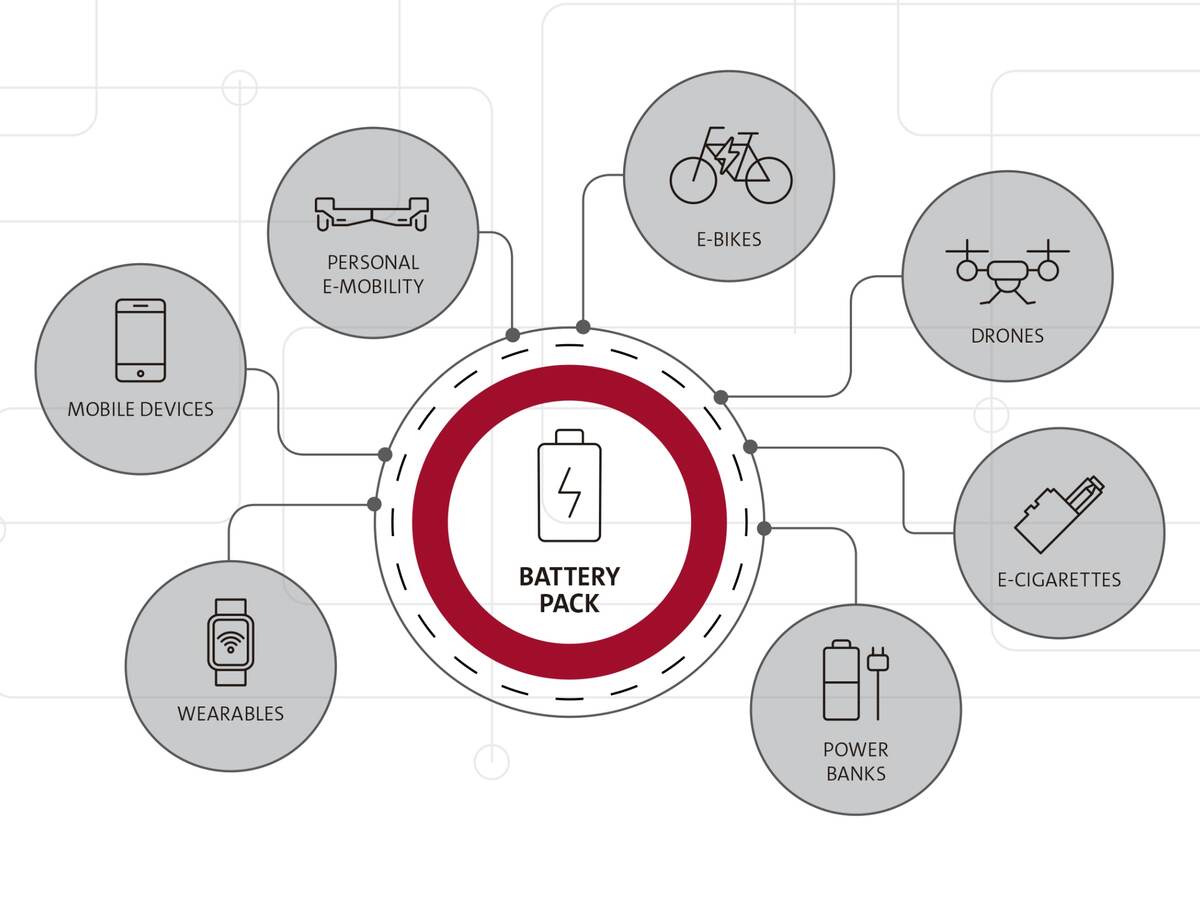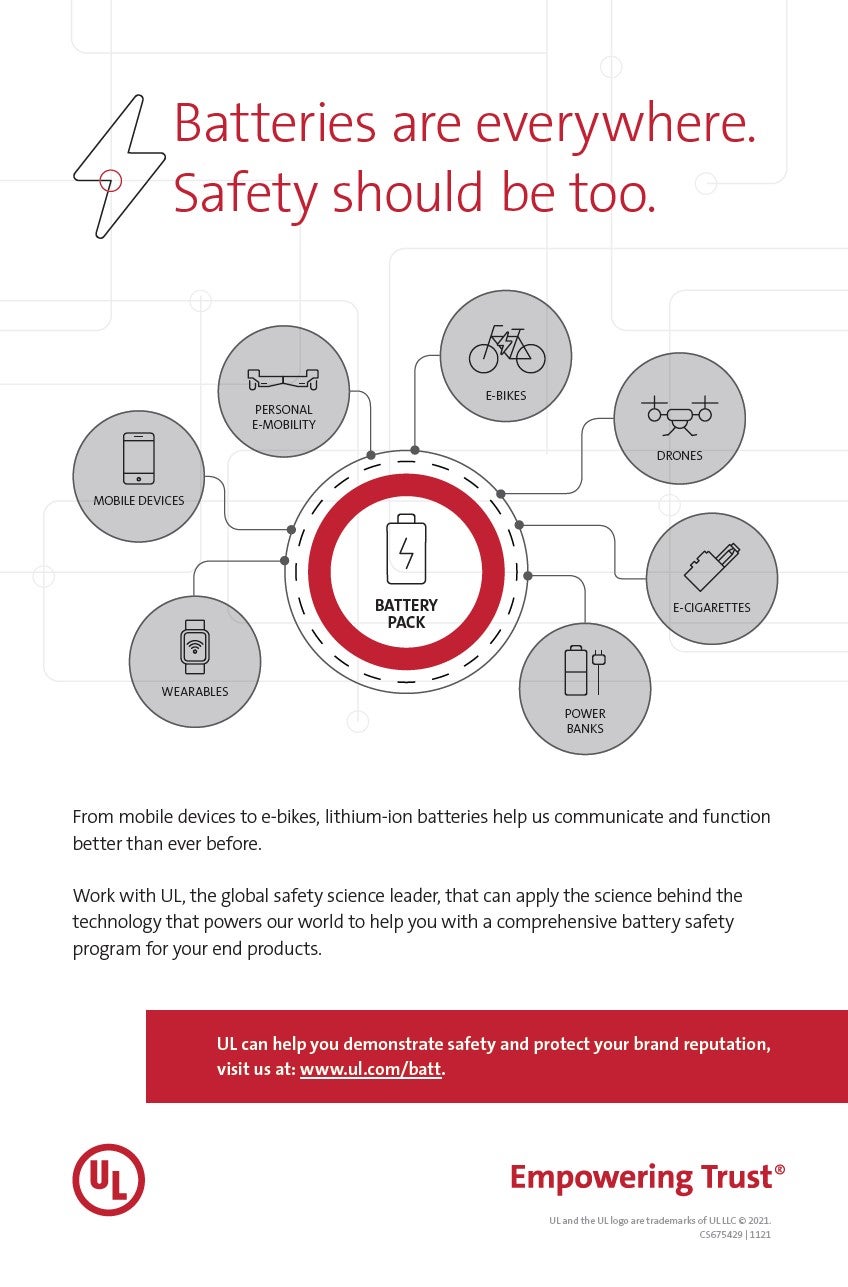
Consumer Electronics Batteries Infographic
Lithium-ion batteries are the most used batteries for a growing range of product categories. UL can help manufacturers identify risks that may impact safety, time to market and brand reputation.

Introduced in 1991, lithium-ion (Li-ion) batteries are found in more and more devices. While we’re used to finding Li-ion batteries in products such as phones, laptops and electric vehicles (EVs), now they are used in a wide array of consumer products, from e-cigarettes to children’s toys and wearable technology to drones.
Such widespread popularity is no wonder. The lithium-ion battery’s benefits include:
Powering mobile devices, e-bikes and more, Li-ion batteries empower us to explore the world. Take a look at our consumer electronics batteries infographic for a quick overview of battery-powered products.
Because of the rising universality of products with Li-ion batteries on board, manufacturers must be sure that their battery-operated products can meet the expectations of today’s discerning consumers — not only for performance, but also, more importantly, for safety.
In July 2020, Consumer Reports conducted a study demonstrating that today’s buyers have expectations around safety that manufacturers are not meeting:
As a global leader in safety science, we at UL offer a comprehensive battery safety testing and certification program to help manufacturers identify risks that may impact product safety, time to market and brand reputation.
For more information on UL’s battery safety testing and certification program, contact our experts.


Consumer Electronics Batteries Infographic
Thanks for your interest in our products and services. Let's collect some information so we can connect you with the right person.